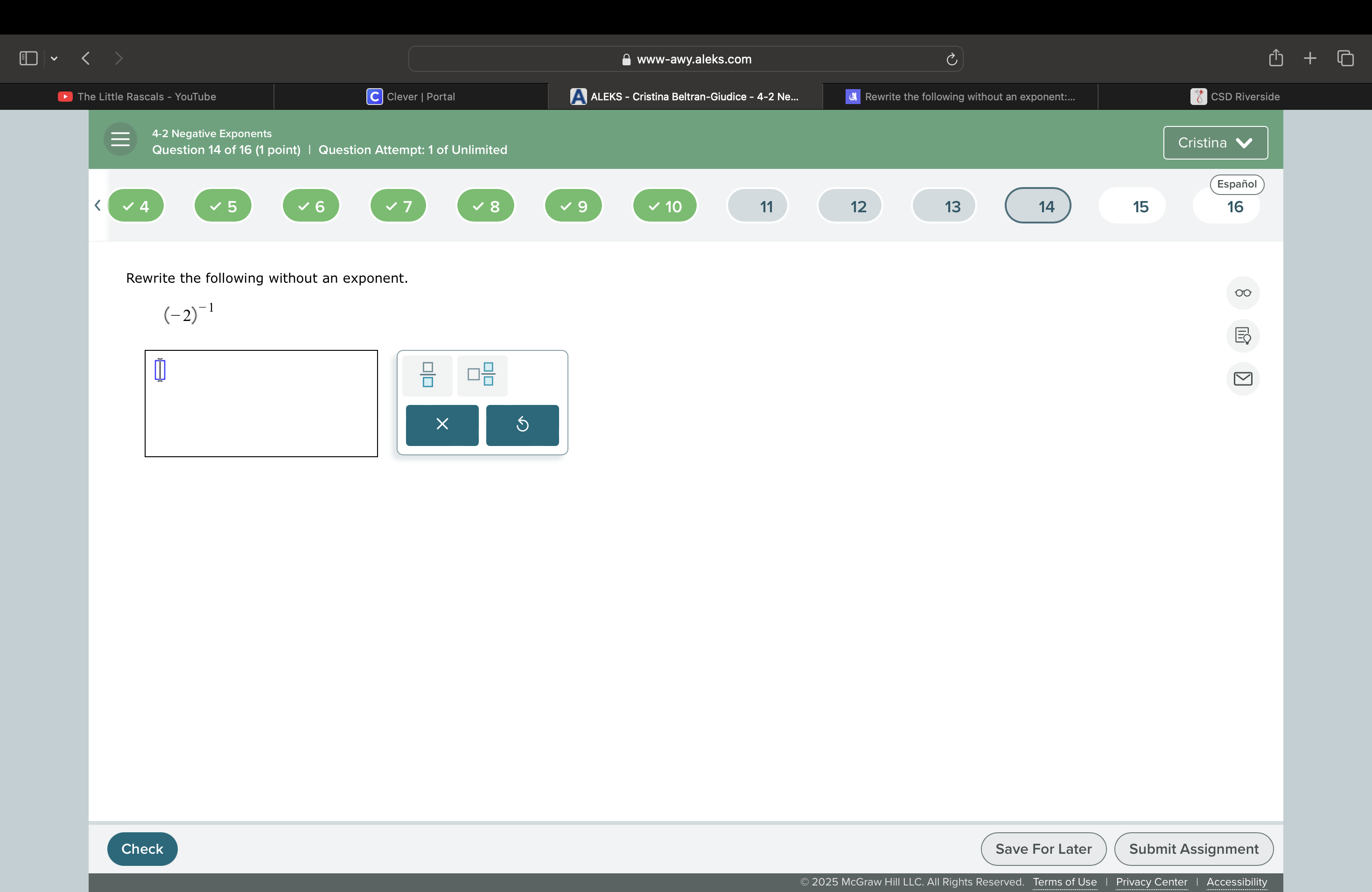Rewrite the following without an exponent: (-2)⁻¹

Understand the Problem
The question is asking for the expression (-2)⁻¹ to be rewritten without using an exponent. This requires understanding the rules of exponents, particularly how to deal with negative exponents.
Answer
The expression rewritten without an exponent is $-\frac{1}{2}$.
Answer for screen readers
The expression rewritten without an exponent is $-\frac{1}{2}$.
Steps to Solve
-
Understanding Negative Exponents A negative exponent indicates the reciprocal of the base raised to the positive exponent. For example, $x^{-n} = \frac{1}{x^n}$.
-
Applying the Rule to Our Expression For our expression $(-2)^{-1}$, we apply the negative exponent rule:
$$ (-2)^{-1} = \frac{1}{(-2)^1} $$
- Simplifying the Expression Now simplify the expression:
$$ (-2)^1 = -2 $$
Thus, we have:
$$ \frac{1}{(-2)} $$
- Final Result The expression rewritten without an exponent is:
$$ -\frac{1}{2} $$
The expression rewritten without an exponent is $-\frac{1}{2}$.
More Information
This result is important as it demonstrates how negative exponents work and how they can be transformed into fractions. Understanding this concept is crucial for simplifying algebraic expressions and for solving more complex problems in mathematics.
Tips
- Forgetting that a negative exponent means taking the reciprocal.
- Misapplying the negative exponent rule, leading to incorrect simplifications.
AI-generated content may contain errors. Please verify critical information